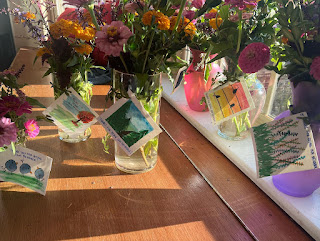HOAs Should Focus on Social Connectedness
Years ago, I spent three long years as president of a Homeowners Association. In addition to budget challenges and non-payment of dues from residents, some neighbors would call and want me to talk to their neighbor about an issue, like a barking dog.
I navigated those treacherous waters as best I could, but if I got to do it over, I would do it differently now. For starters, I would redirect the HOA toward social activities and events that would build social connections among neighbors. Socially connected neighbors are more likely to work out their own problems!
A lot has changed in neighborhoods over the last two to three decades.
Psychologists Jacqueline Olds and Richard S. Schwartz documented in their 2016 book, "The Lonely American," how the word "neighborliness" has shifted. The midcentury meaning was actively reaching out to, caring for, and involving oneself in neighbors' lives. Now the modern norm is keeping one's distance, keeping noise and nuisances to a minimum, and respecting the privacy of those with whom we share hallways or sidewalks.
When I think about those previous experiences, I am at least thankful that the meetings with disgruntled neighbors were more or less civilized interactions. But it was "civilized" because it unfolded face-to-face. Anonymous, legalistic, and social media interactions are replacing the communication and compromise that have defined community living for thousands of years.
Part of the explanation for this phenomenon is the rise of homeowners' associations (HOAs). Too many residents of HOAs watch bad behaviors and then complain to the HOA in hopes that a third party will fix the issue with fines or threats.
An HOA is a nongovernmental body most often run by a volunteer board of directors, which wields authority over what happens in a neighborhood. Membership is usually mandatory for homeowners within its boundaries and involves paying dues. What an HOA does in exchange for those dues ranges widely.
According to 2017 data from the Community Associations Institute, 61% of new housing built for sale in America is governed by a "community association." It is estimated that some 28 percent of Americans now live under an HOA, paying some $95 billion in dues annually.
In most cases, using the terms "community" and "association" to describe these legalistic, fee-for-service entities is a stretch. If you have ever fumed over an HOA violation, interaction with the HOA board, or wondered why more people do not volunteer or attend meetings, then it may be time to reconsider the focus of your HOA.
By elevating rules over relationships in our communities and turning to third parties to resolve our disputes, we are turning the social concept of neighborliness on its head.
Neighbors are supposed to be part of our support system. But instead, they are becoming the enemy—to be avoided at best and fought off with lawyers at worst.
It's time to rethink what trends like HOA-governed communities are doing to our neighborhoods. If you have a dispute with your neighbor, attempt to resolve it face-to-face and try to appeal to reason and relationship rather than a disembodied set of rules.
But even before
that happens, go across the street and introduce yourself to your neighbor.
Thank them for being a part of your community. Ask them if there's anything you
can do to make their life easier or better. Build a bridge before one more
rupture occurs.





Comments
Post a Comment